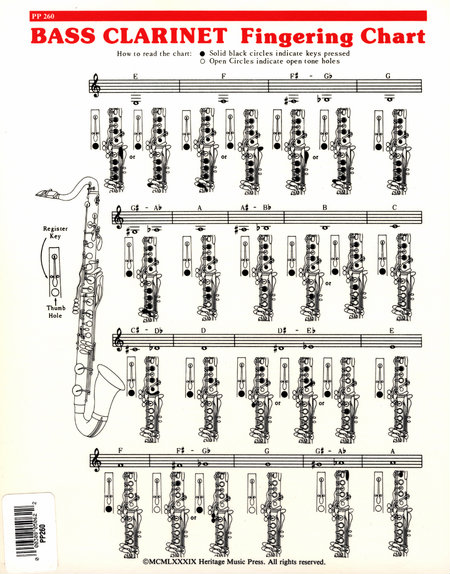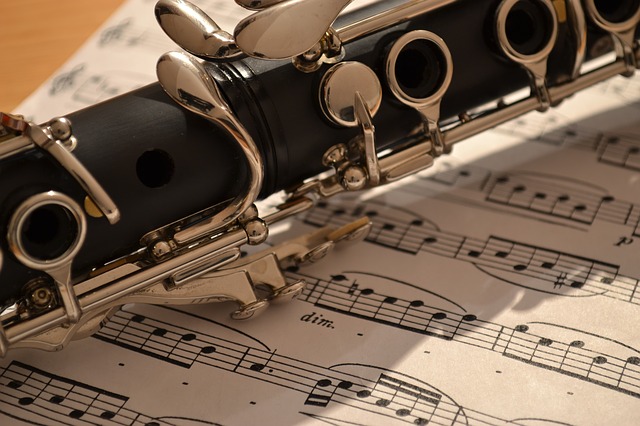Hello there, music lovers! Signing up for Bass Clarinet lessons and want to know what it is? You are at the right place then.
To have a definite experience in music is very important for some people.
In one of our previous articles, we learned about Bass Instruments. In this article, you will get to know about the bass clarinets in detail.
Now those of you who have played a regular clarinet know how different it is from the bass clarinet. For those who didn’t, this is the perfect place to begin.
Bass Clarinet Introduction
Bigger than the regular Bb clarinet by a considerable amount, the bass clarinet is an amazing instrument for music production.
Most of the players opt for the bass clarinet after trying out the regular one. An interesting fact about the bass clarinet is that it has a striking resemblance to that of an old saxophone.
With keys of 20 inches and a seemingly S-bended structure of a metal piece, the bass clarinet is both stylish and beautiful.
One might get easily confused while deciding between a Bb Clarinet and a Bass Clarinet. To avoid that, one needs to be familiar with the structure and form of both.
The main difference between both the clarinets is the presence of a neck in the bass clarinet, in place of a barrel. Also, the bass clarinet is a pretty heavy instrument to hold. So for that, it has a slot in the back for a peg stand to support the instrument while the player is playing.
Few bass clarinets have a characteristic, that is, the occurrence of both lower and upper joints in a single piece instead of dividing it into two. Such clarinets should be avoided.
A clarinet should always have a perfect assemblage of its different parts. Parts such as the Reed, Ligature and Mouthpiece should be correctly fitted before joining the horn in.
Almost all of the bass clarinets are primarily made up of plastic or any other composite stuff. Some rare professional modeled clarinets have wood as their building material, and these are the best in the zone.
With zero effect on humidity and temperature, these wood-built clarinets are the best you could find. Just make sure you practice well.
Bass Clarinet Finger Chart
It is essential to understand the notes of the bass clarinet, the fingering pattern, and the position of the bass clarinet in the musical group. Most of the players opt for only learning the basics and do not go into the depth of the lessons.
This leads to problems in learning and communication with the different musicians. So to avoid that from happening, it is essential to know all the 12 scales and the fingering of the notes in the bass clarinet.
bass-clarinet-chart
There are different keys in the bass clarinet that need proper pressing for producing sounds of different frequencies.
For a newbie, in the case of bass clarinets, it might be a bit challenging to know about certain keys and the sounds they produce.
The notes that these keys produce can be a bit confusing too. For that, proper practice is a must.
Clarinet keys are the most important part of a bass clarinet. You must learn to master the keys by using your fingers. Once you do that, the music produced will be mesmerizing.
Now, there are ‘some things’ that you need to take care of:
- The tone-hole of the clarinet needs to be properly shut tight so that no air passes through the holes.
- A bit of resistance to the flow of air when opened is right.
- The keys should close and open as fast as possible in both directions.
Few keys open and shut two different holes at the same moment though. Particular care is needed in this case.
So, this was the detailed finger chart explaining the notes and the several tones holes that require pressing to bring out those notes.
Practice hard because it’s the only way to attain perfection and become a star player.
Popular Bass Clarinet Uses
There are many different uses for the bass clarinet. Especially the dominance of this excellent instrument in the entertainment world is surely worth mentioning.
The use of Bass clarinets is consistent in performances in orchestras and concerts from the 19th Century. Although, the more frequent use of bass clarinets is for the production of band music in concerts.

Several solo performances and music selections also credit the use of bass clarinet in their compositions. People especially love the touch of bass clarinet in jazz music.
Several examples of jazz music compositions have a particular element of bass clarinet in them. This only adds to the charm of the music.
However, nowadays bass clarinets are mostly used for choir practices, film music, and marching bands.
Bass Clarinet Range
Modern bass clarinets in Bb have a range of Bb1 – B5.
The compass is roughly the same as the bassoons and an octave below that of the Bb clarinet (D3–Bb6).

Compared to the ambitus of the bass clarinet in Bb usual in Berlioz’s day (D2–F5) the modern instrument with its four additional keys reaches a third lower; the keys correspond to the four notes Db2–Bb1 (sounding). However, models are still made with the lowest note of C2 or Db2.
(Source)
Clarinet Family
Only the regular Bb clarinet comes to mind when someone thinks about a clarinet or mentions it. However, many different types produce different tones of music.
While a professional can identify each one separately, someone unfamiliar with the clarinet family won’t be able to do so. So for them, here is a list of different members of the clarinet family ranging from E flat clarinets to Contra Bass clarinets.
• E-Flat Clarinets: These clarinets are the smallest in size and slightly shorter than the regular ones. And their keys are narrower.
E-flat clarinets produce a shrill and sharp tone and require specific technical skills and the best hearing capabilities to be correctly played.
• A & B Flat Clarinets: These are the more common forms, more commonly referred to as the ‘soprano’ clarinets.
The B-flat clarinet is used in Jazz music composition, and the A-flat dominates the classic music tones. Out of these both, the most frequently used one is the B-flat clarinet.
• Alto Clarinets: A slightly developed form of the basset horn, these clarinets have a striking similarity of structure to those.
The iconic bending barrel in these is usually created from metal. The more moderate tone produces clarinets. These are primarily used in harmonic and symphony bands.
• Contrabass Clarinets: Essentially the largest one of the lot. These are scarce kinds that are not frequently used. With its dark tone, this instrument finds its use in the special effects zone of professional bands and other ensembles.
Conclusion
To sum up, the bass clarinet is a pretty excellent bass instrument for beginners and professional clarinet players. A seemingly great instrument to use in orchestras and bands, the bass clarinet deserves all the popularity they get.
Learning to play the clarinet won’t be such a bad idea. Plus, you have all the necessary information right here.
So hurry up and get yourself one, and don’t forget to practice the notes and scales because practice is the key to perfection!
